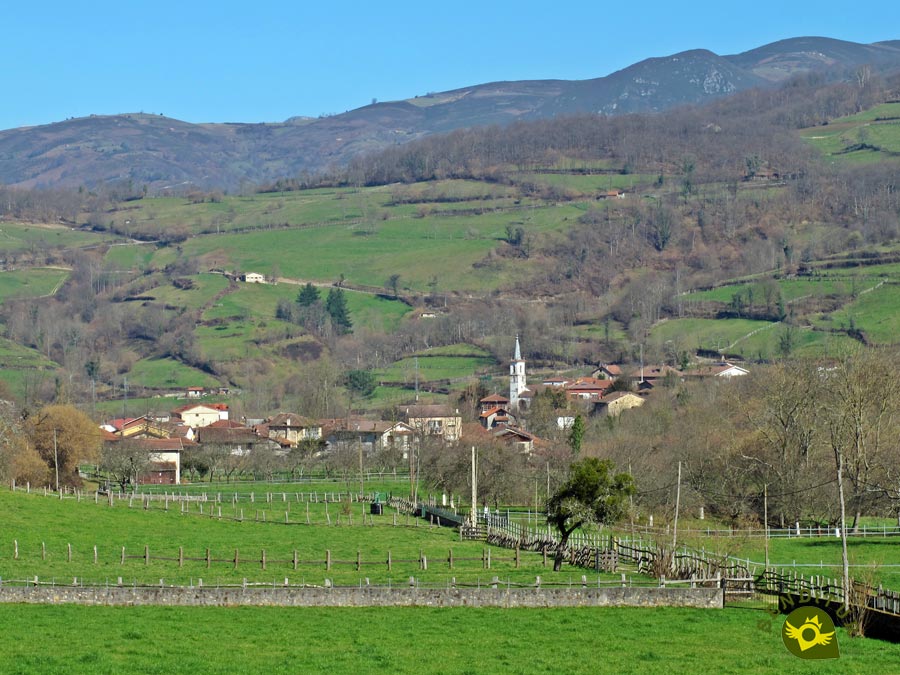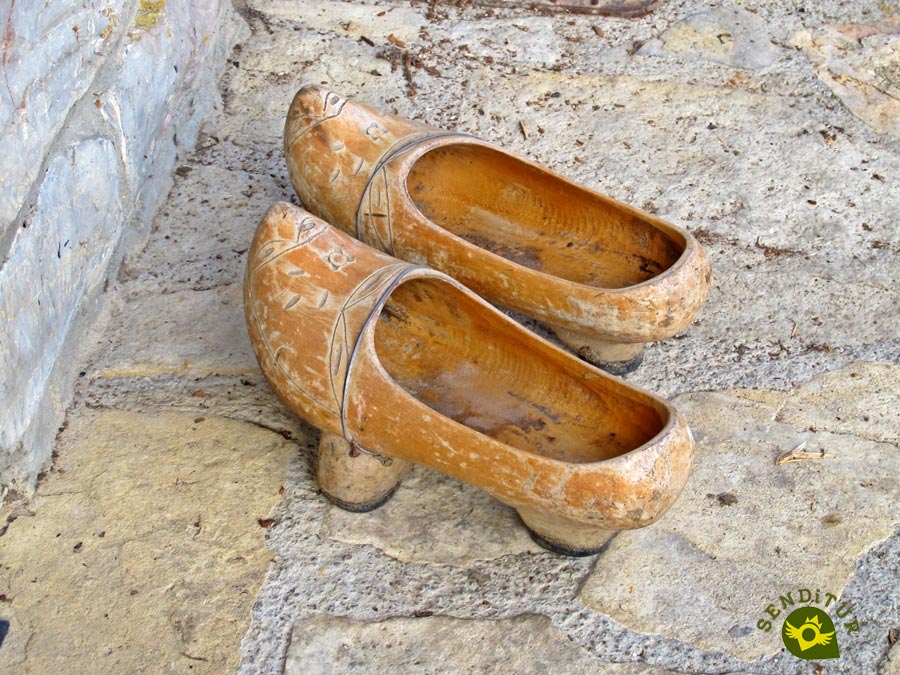In the region of the Nalón valley, it is a village of the council of Sobrescobio, being located in the south half of the same one, in the south-eastern mountainous zone of the region and is formed by three districts: San Andrés, Agues and Soto. The history of Soto de Agues is the history of the area where it is located and goes back to the Neolithic period in which the first coyans, the name given to the people of Sobrescobio, left their mark, as the tumuli of Unqueru, Campu, La Braña, Monte Caon and Pumarin testify. Of later times it is the presence of old astures in the pre-Roman castros as the one of the Crown of Castro in the hill known as The Cueto in Agues. The Romans arrived in the area and also left their mark on the cobbled road that crosses the council following the path of the river Nalón, or in the castle of Aceales also called Torrexon de Villamorei.

Visigoths and Arabs also enjoyed the rich forest and fish farming of the place but it is not until the late Middle Ages when there is evidence of stable population. In the year 1185 the king Fernando II donates to the Military Order of Santiago the inheritance and castle of Sobrescobio who yielded the usufruct of the same one to diverse gentlemen who collected tithes and administered justice. Alfonso XI grants the Town Charter to the council. At the beginning of the 16th century the territory became a municipality and after several years of disputes, in 1568 the king gave it independence and autonomy of its own. The people of the place, in the 19th century, also participated in the War of Independence against the French as well as in the Carlists. After years of population loss, the area and Soto de Agues resurface thanks to their environmental richness.

Soto de Agues invites you to get lost in the network of its narrow streets in order to discover the typical architecture of its farmhouse with balconies and wooden corridors interspersed with ancient hórreos, most of them more than a hundred years old. Some of its houses have also lived through centuries of history, such as the House of the Canella, from the 16th century. In a peaceful square is the chapel of San Antonio de Padua built in 1709. At the exit of Soto de Agues in the direction of the famous Route of Alba, a beautiful washing place evokes other years in which it was important. Crossing the bridge with its medieval arch you reach the district of San Andres where the old building of the School of Promotion Indiana de Soto de Agues, which was formed by a house, the school and the popular library and was burned during the Civil War and rebuilt later in 1948 to become a school for girls, with housing for the teacher, today is the headquarters of the Library and Offices of the Rural Development Group "PRODER II Alto Nalón".

A little higher up is the parish church of San Andrés, historicist style, was built in 1805 with the economic effort of the neighbors of the village, intervened in 1857 was rebuilt in 1872, has had major reforms in the early twentieth century. On the outside there is the following inscription: "it was done at the expense of the neighbors of San Andrés de Agües being judge Don Toribio Suárez de la Bera, in 1805". Walking between hórreos and traditional houses, one discovers a Potru de Ferrar with a trough, where saddle animals were attended to and horseshoeed. A little further away is the district of Agues where you can see the chapel of Santa Ana, a laundry and the remains of the Asturian settlement in the Crown of Castro. Furthermore, pleasant walks and gentle paths take visitors to idyllic corners where they can also discover, with the musicality that the current of the river breaks the silence, old fulling mills or some restored flour mill such as the Molinos de la Pontica in Soto de Agues. Around the washing places and the mills people would gather and comment on their daily life, or they would sing and tell each other coplas and proverbs or they would listen to some popular riddle such as "What the mill has/ Precise and not necessary/ It can't grind without it/ And it's of no use to you".

Soto de Agues celebrates its festivities in honour of Nuestra Señora del Carmen on the first weekend in September and Santa Ana in July.
Many villages preserve the tradition of making Asturian Bolos championships in its Cuatreada modality, which is considered to be autochthonous to Asturias. It consists of knocking down some wooden sticks planted in the ground, by means of a ball also of wood from a determined distance. In the different villages of the area there are still several names related to bowling, such as El Xugu de los Bolos, in Soto de Agues.
The Redes Natural Park, Biosphere Reserve, extends over the territory of two councils: Caso and Sobrescobio, of which the village of Soto de Agues forms part, from where the Route of Alba, which was declared a Natural Monument in 2001, starts.

According to the name of the council to which Soto de Agues belongs, Sobrescobio, comes from the Roman era of "super scopulum", over "el escobio" which is how in Asturias the gorges are called, referring to the narrow pass that the river Nalón has carved and that served as the entrance to the council.
MORE ROUTES AVAILABLE, DON'T MISS IT...
MORE PLACES AVAILABLE, DON'T MISS IT...
To get to Soto de Agues we have to do it first to Rioseco in the middle of the AS-117 road that departs from Langreo to cross from west to east all the Redes Natural Park passing through towns like Pola de Laviana, Rioseco or Campo de Caso. It is concretely in the same Rioseco where we will find the detour that leads towards La Polina and Villamorey, being in this last town where it is the beginning of the road that will approach us finally until Soto de Agues.
Every Thursday there is a bus service that connects Soto de Agues with Pola de Laviana. The bus stop with daily service is in Rioseco about 3.5 km from Soto de Agues.
SENDITUR is not responsible for any variation in the information described, as well as for the misuse of its guides and recommends that everyone be responsible and prudent in carrying out the activity. Likewise, we invite you to document yourself with books and specialized guides to complement the information described. From the commitment of SENDITUR with Nature and the respect to the balance of the environment, SENDITUR urges you to travel in a responsible way, with low environmental impact and respecting at all times the Natural, Cultural and Social environment wherever you go. For any suggestion, SENDITUR invites you to send an email to .
Continue watching …